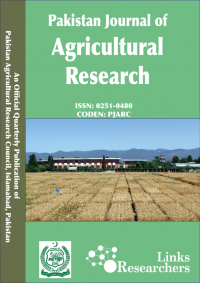Muhammad Azeem Khan*, Abid Hussain, Irfan Mehmood and Sonila Hassan **
ABSTRACT
This study aims to identify the effects of climate change on the socioeconomic characteristic and livelihoods of farmers in semi arid zones of Punjab and Khyber Pukhtunkhwa provinces of Pakistan. Data for the study has been taken from various issues of Crop Area Production (by districts) MINFA (Economic Wing), district agricultural departments and meteorological department, Islamabad. Primary data for the study was collected in 2010 by conducting farm level surveys in Kohat and Attock districts. Clusters of six villages were selected from each district for field surveys. Six community representatives and 36 farmers were interviewed by using a set of well-designed questionnaires from each site. Results showed that over last three decades, number of small and tenant farmers increased in the semi-arid zones of Pakistan due to environmental harshness in general and law of inheritance in particular. Due to increase in mean annual temperatures and irregular rain patterns, area under major crops at Kohat and productivity of major crop at Attock decreased. Bivariate correlations between mean seasonal rainfall, area and production of major crops were moderately positive and statistically significant (except for wheat crop at Attock). This means that an increase in rainfall contribute positively towards area under major crops and their production and vice-versa. Farmers perceived a major change in climate at Kohat and a minor change at Attock over time. They reported unsustainability in production practices at Kohat and water management practices at both sites. Main strategies adopted by the farmers to mitigate the effects of climate change were occasional sale of livestock, reduction in consumption expenditures, and migration to nearby cities for non-farm employment.
To share on other social networks, click on any share button. What are these?






